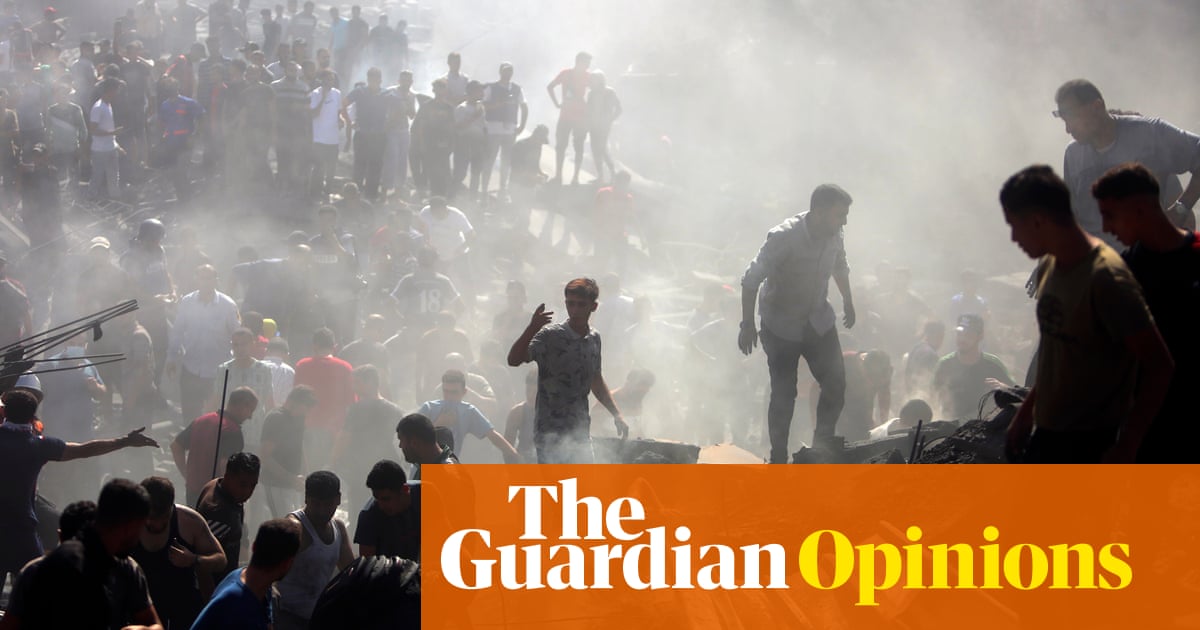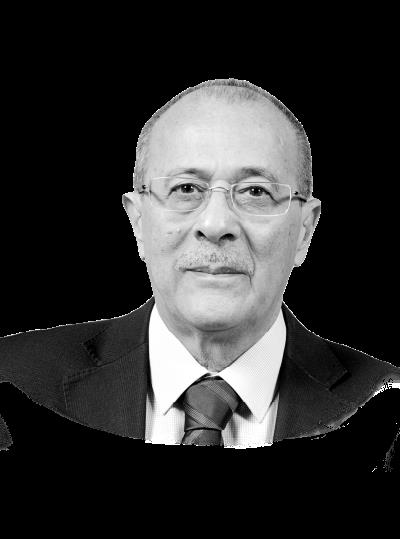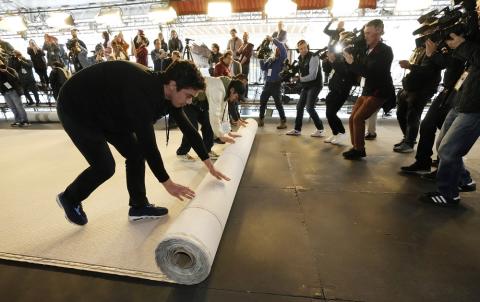
In Atlanta, the BeltLine Eastside Trail recently saw a new addition to its landscape: a new public artwork by the Historic Fourth Ward Park, close to the birthplace of Dr Martin Luther King Jr.
Until 11 August, pedestrians will see a 28ft tall, 7,000lb Afro pick.
It’s a sculpture by the New York artist Hank Willis Thomas called All Power to All People. As part of his project with Kindred Arts, the sculpture will tour cities across the US ahead of the presidential election in November.
“To me, the work is a celebration and a provocation,” Thomas told the Guardian. “It’s a symbol of community, strength, justice and belonging that aims to inspire action and demand social change.”
After its time in Atlanta, the sculpture will travel to Washington DC from 15-28 August, coinciding with the forthcoming Get Your Knee Off Our Necks: Commitment March on Washington on 28 August, led by the Rev Al Sharpton; the event marks the 57th anniversary of King’s I Have a Dream speech. The sculpture then travels to Los Angeles, Chicago and Philadelphia. It previously appeared on display outside the Africa Center in Manhattan last year.
In light of the Black Lives Matter protests and racist Confederate monuments and memorials removed in recent months, some wonder what the future of public art and monuments will look like. “Public monuments have a higher charge now,” said Thomas. “With all the things that have been happening with monuments across the country, this felt more important than ever.”
The first Afro comb was patented in 1969 by two African Americans, Samuel H Bundles Jr and Henry M Childrey. It was popularized by the Black Power movement and often designed with a clenched fist and a peace sign.
“The peace sign has been an element of black power. It was a time of the radical redefinition of beauty, the growing of our hair and the celebration of culture that was underappreciated,” said Thomas.
The fist was added to many Afro combs as a nod to the Black Power salute that was popularized by the Black Panther party. At the time, it was known as the Black Power Afro pick hair comb and was manufactured by Antonio’s Manufacturing, founded by Anthony R Romani (who designed the Afro rake comb and the peace sign Afro pick in 1972).
“It is a uniting motif, worn as adornment, a political emblem and signature of collective identity,” said Thomas. “In light of ongoing, anti-black police brutality and a pandemic that disproportionately affects black individuals, it’s an urgent public art piece serving as a symbol of unity, pride, strength, perseverance, justice and belonging.”
The key, he says, is the peace sign at the heart of the Afro pick. “Even with the Black Panthers, what they wanted was peace, but there was a war on the community, so it was called the Black Panther Party for Self-Defense,” he adds. “I wanted to highlight this idea of the Black Power movement as always being a peace movement.”
Thomas is known for his recent public art projects, including Incarceration Nations: Writing on the Wall, where the artist and Dr Baz Dreisinger have projected writings by prisoners fearful of catching the coronavirus on to Manhattan’s criminal justice buildings. He is also working on the ongoing project, For Freedoms, an ongoing country-wide billboard art initiative co-founded with Eric Gottesman, which has provoked a debate around voting.
The new sculpture was inspired by the artist’s 2017 project, All Power to All People, a 9ft Afro pick the artist made for Mural Arts Philadelphia and Monument Lab.
It sat near Philadelphia City Hall, next to the monument of Frank Rizzo, the controversial conservative mayor and police chief who attacked the Black Panthers in the 1970s. The Rizzo monument was removed in June. “After that sculpture was removed, there were recent calls for my pick piece to take its place there,” said Thomas.
It traveled, too, to Burning Man, the annual event in Nevada’s Black Rock Desert, last summer. “The sculpture was at its best at Burning Man because there are less rules, so people could climb up inside it,” said Thomas.
“We had LED lights that made it change color at night. There was also a soundtrack that went along with it called Black Righteous Space, which has speeches and music from Afro Caribbean and African American movements of the past,” he adds. “Burning Man isn’t the most culturally diverse place, so it was monumental as a statement.”
Despite the recent wave of public art as a mere selfie op for Instagrammers, Thomas still believes that it can spark action, that art can influence the public vote. “We see how political public space is. What’s exciting about this work is that it’s very much a rallying call,” he said. “Having it tour during this election has extreme potency and power.”
Thomas’s first major retrospective will open 4 September at the Cincinnati Arts Museum. He recognizes that this new sculpture is timely amid the social upheaval storming the globe, even though he has been making political art for the past 20 years.
“It’s something I’m still reconciling with,” said Thomas. “It’s heartbreaking to think that it takes several murders by the people who are hired to serve and protect us in order for there to be true movement to understand, acknowledge something so basic, which is that black lives matter.
“I’ve always struggled with the necessity of even having to say that because it’s so obvious,” he said. “I am looking forward to the moment where a lot of things I’m talking about are the norm. How do we continue to redefine and open new doors for other people to get more access to liberty and justice?”
Many Americans are looking forward to changing the course of the country with the election, but Willis says that might not be the ultimate answer. “A single election doesn’t matter,” he says. “Everything helps – even the current president helps because he helps show what’s at stake when we don’t engage.”
Willis believes artists have an ability to see the future, that they can channel what they have seen through their artwork.
“It isn’t just artists, it’s activists, as well,” he said. “We may not see or be there for the final moment, as Martin Luther King Jr said on the night he was murdered: ‘I’ve seen the mountaintop. I might not get there with you.’
“I feel like that’s so prophetic, so frightening, but I understand more about what he’s saying,” said Thomas. “The road towards progress is always under construction. The work will not be complete in our lifetime.”












